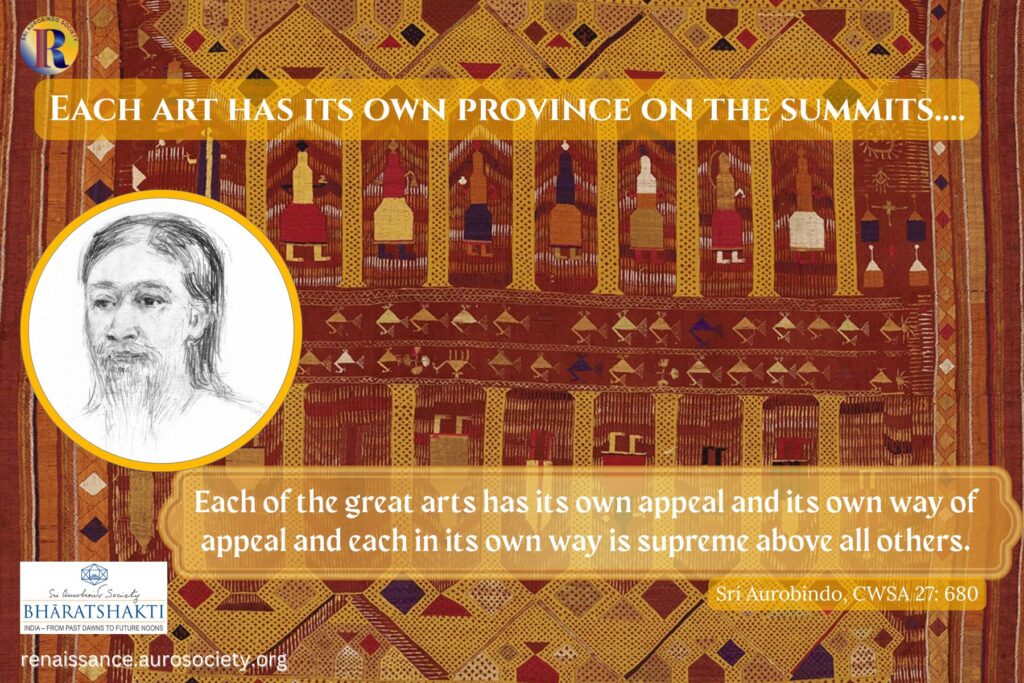Volume V, Issue 4
Author: Beloo Mehra
In a small fragile seed a great tree lurks,
~ Sri Aurobindo, Savitri, Book X, Canto III, CWSA, Vol. 34, p. 623
In a tiny gene a thinking being is shut;
A little element in a little sperm,
It grows and is a conqueror and a sage.
Imagine yourself strolling through an empty street which is studded with big, medium and small green trees on either side, their branches and leaves swaying in the breeze, fresh new growth making some of them look fresher than usual, the beautiful fragrance of new flowers coming up here and there. Gloriously green! The flowers in their splendid pink and purple hues and brilliant yellow and violet tones are happily immersed and surrendered to that vast and glorious green cover around.
But what if your mind is too busy to pay attention and experience any of this?
Perhaps what is needed to experience such simple joy is a readiness to receive the beauty of Nature. Such an experience energises and renews. Green is after all, the colour of Life, symbolic of “vital energy of work and action,” says Sri Aurobindo (CWSA, Vol. 30, p. 132).
But a sense of renewal, a feeling of joy are not the only gains from spending time with Nature. The Mother once said – “… if one deeply feels the beauty of Nature and communes with her, that can help in widening the consciousness” (CWM, Vol. 16, p. 401). She had expressed this in response to a question whether being in contact with Nature helps us in any way.
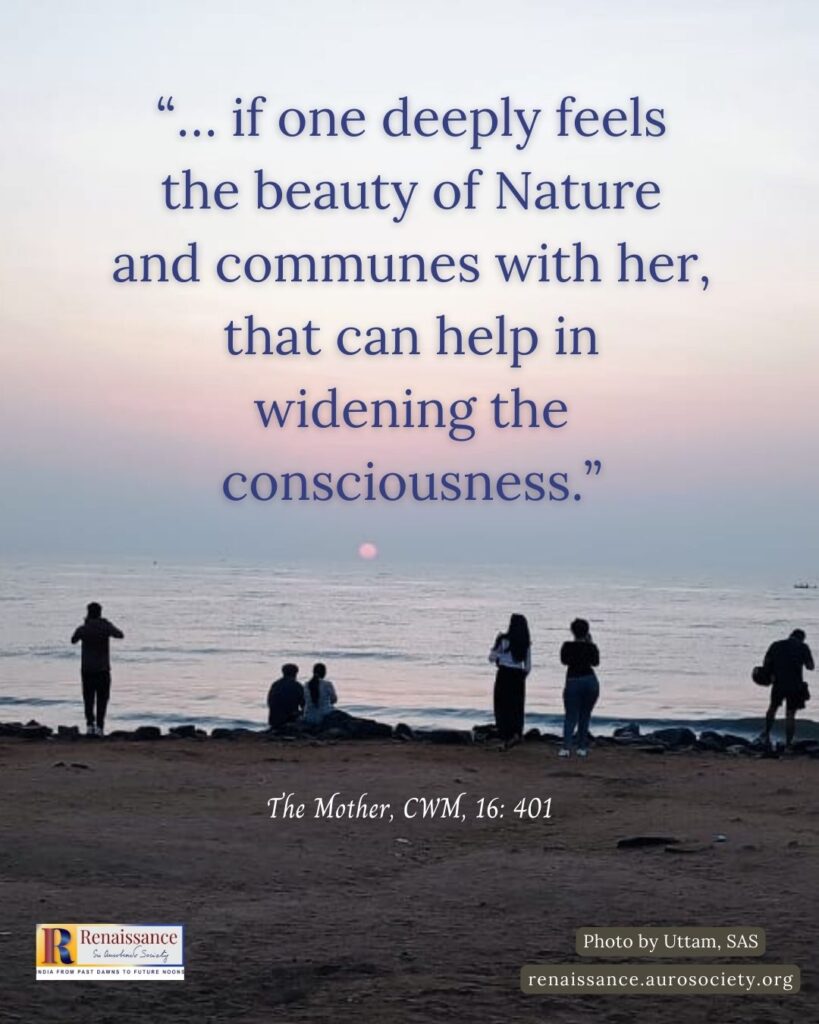
Since ages, people suffering from all kinds of chronic ailments have been advised by healers to spend time in Nature. One absorbs something truly special in the company of Nature; perhaps it is the simple joy of being and becoming. One of the many things Nature teaches us is how to be rooted in one’s true inner nature, svabhāva. And blossom simply for the delight of the Divine – with no pretence or performance of any kind for the sake of another, or to live up to one’s ego-constructed self-image.
All here where each thing seems its lonely self
~ Sri Aurobindo, Savitri, Book I, Canto IV, CWSA, Vol. 33, p. 60
Are figures of the sole transcendent One:
Only by him they are, his breath is their life;
An unseen Presence moulds the oblivious clay.
Read:
The One Who Fashions a Cosmos, and a Curl
Over the past few centuries, the world has witnessed widespread destructive impact of the materialistic-industrial-scientific-rational mindset with its push on the satisfaction of individual material wants and desires and with a tendency to look at Nature merely as a resource to be exploited for man’s comforts. The sacredness of earth and nature which was at the center of the ancients’ view of life and existence has been almost erased from the collective mind of humanity.
We are acutely aware of the crisis facing us all; the future of ecological balance will impact the next phase of earthly evolution. Individuals, societies, nations are all seeking solutions – from science, industry, arts, new age spiritual movements. Terms like conscious consumerism, ecological living are becoming commonplace among the educated elite.
But the truest, the deepest, the most sustainable and effective solution lies in the evolution of consciousness – in the movement from avidya to vidya, from the consciousness of Multiplicity to the consciousness of Oneness, oneness with all Nature, all Existence, all Beings. In the movement of Love.
The Mother once said that the whole life of plants and trees is a worship of Light, the material symbol of the Divine. This is Nature’s yearning for its hidden Divinity. And Light awakens in the Nature a seeking for Oneness with the Creative Source and Force of it all, the para prakriti.
Just as in us too, the Light of the Supreme and the Divine Force of Love can awaken a true aspiration, a sincere yearning to unite with our true source, that deep Oneness within. This is why only the deepest force of Love for Mother Nature which comes from this center of Oneness has the potential to lead the humanity and earth out of the ecological crisis we face today.
Read in the previous issue:
Environmentalist, Ask Thyself – Is Nature She or It?
All from his stillness came as grows a tree;
~ Sri Aurobindo, Savitri, Book XI, Canto I, CWSA, Vol. 34, pp. 681-682
He is our seed and core, our head and base.
All light is but a flash from his closed eyes:
An all-wise Truth is mystic in his heart,
The omniscient Ray is shut behind his lids:
He is the Wisdom that comes not by thought,
His wordless silence brings the immortal word.
He sleeps in the atom and the burning star,
He sleeps in man and god and beast and stone:
Because he is there the Inconscient does its work,
Because he is there the world forgets to die.
He is the centre of the circle of God,
He the circumference of Nature’s run.
His slumber is an Almightiness in things,
Awake, he is the Eternal and Supreme.
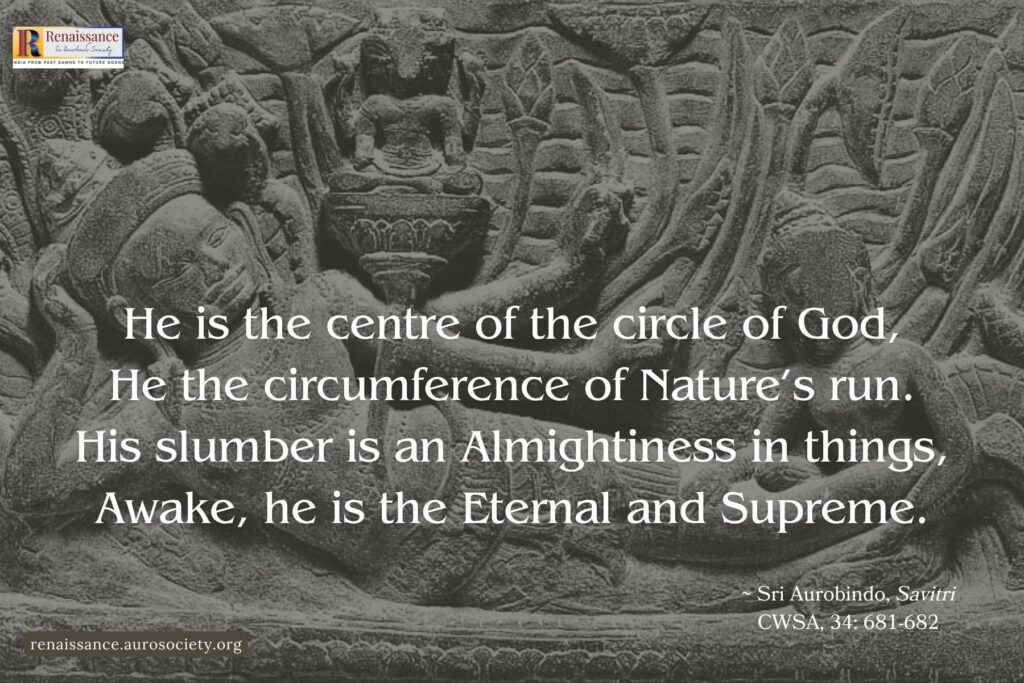
In this issue
Welcome to the second issue exploring the theme – Divine in Nature. We hope our readers enjoyed going through the previous issue which dealt more with the philosophical basis for the topic.
In this issue we turn our attention toward how one can grow in consciousness through consciously connecting with Mother Nature, with trees, flowers, mountains, and more. One Must Try to Become Like a Flower features a most delightful conversation from the book ‘Sweet Mother: Luminous Notes’ – Conversations with the Mother as recounted by Mona Sarkar.
Gayatri Majumdar’s reflection titled Memory of a Seed (Self-remembering) is reminiscent of a story from the Chandogya Upanishad where Uddalaka shows his son Shvetaketu the Truth of the Self by asking him to break open a seed.
In our ongoing series The Upanishads Elucidated by Lopa Mukherjee, we feature another insightful story titled The Enigmatic Seed. Enjoy this beautiful retelling of how the Supreme seated Itself in all Manifestation – in a seed form, waiting to blossom in full.
New Flipbook: Flower Power
In a piece titled How Flowers Brought Me Closer to the Divine, Runalika Roy recounts how flowers became the medium for the author to grow into a deeper relation with the Divine in her childhood. Chirasree Mitra, an ardent trekker, sees herself as a worshipper of the mighty mountains and the rivers and writes a beautiful account of her communion with Divine in Nature in a piece titled I Found My God on the Trail.
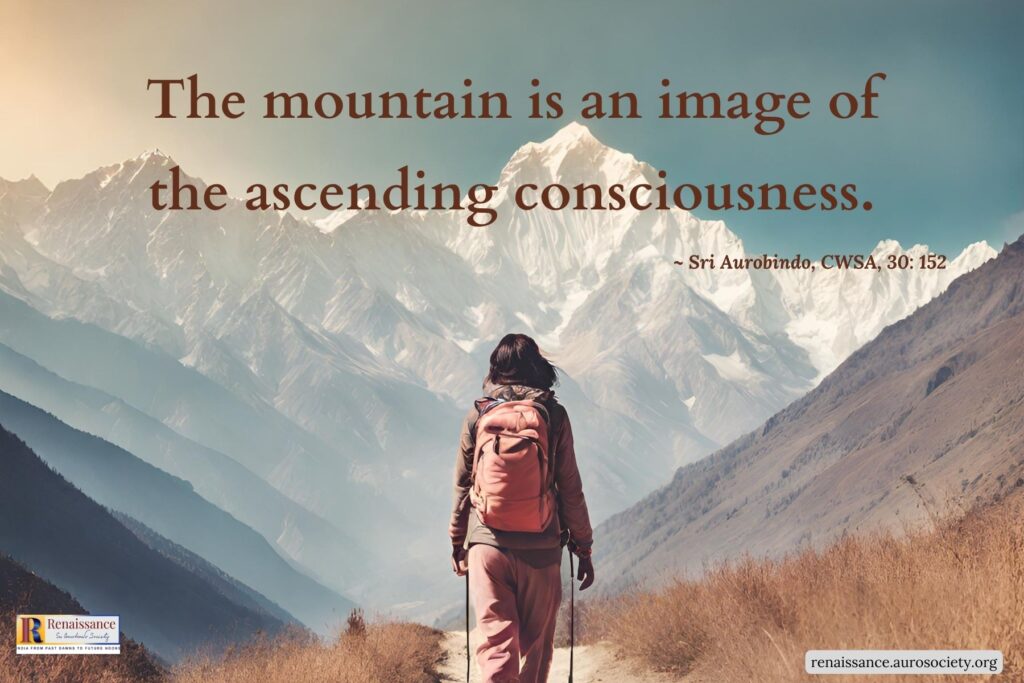
In Experiencing the Divine through Nature’s Mandalas, Jayashree Ashok shares a few contemplative practices involving mandalas, which she and her team at Creative School use regularly for both Education and Healing purposes. She describes how these practices help one go inward and get in touch with the innermost silence, the psychic presence within.
Nature mysticism and Romanticism in English Poetry go hand in hand. An example is William Wordsworth’s famous poem ‘I wandered lonely as a cloud’. Read some words of Sri Aurobindo on Wordsworth’s poetry, and listen to ‘I wandered lonely as a cloud’ in our feature titled Inner Awakening to Nature, featuring Wordsworth’s ‘Daffodils’
Deeply moved and inspired by the last month’s editorial, one of our readers, Dimple Chhabra generously offered to translate it in Hindi. She did it for her delight, and shared it with us. And we liked both the gesture and her translation so much that we have invited her to write for us in Hindi as and when she can find time. To which she instantly agreed. Read her translation titled वो जो ब्रह्मांड सजाता है, वही तो लटें संवारता है |
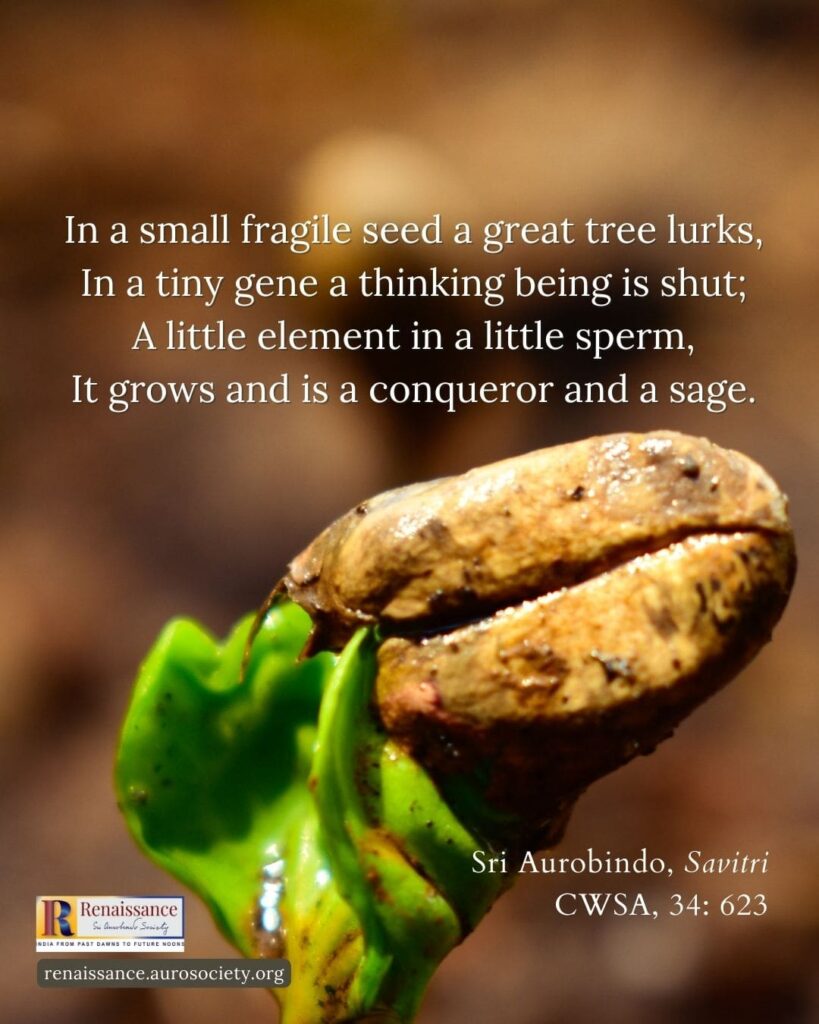
As always, we offer this work at the lotus feet of Sri Aurobindo and the Mother.
In gratitude,
Beloo Mehra (for Renaissance Editorial Team)
~ Design: Beloo Mehra

